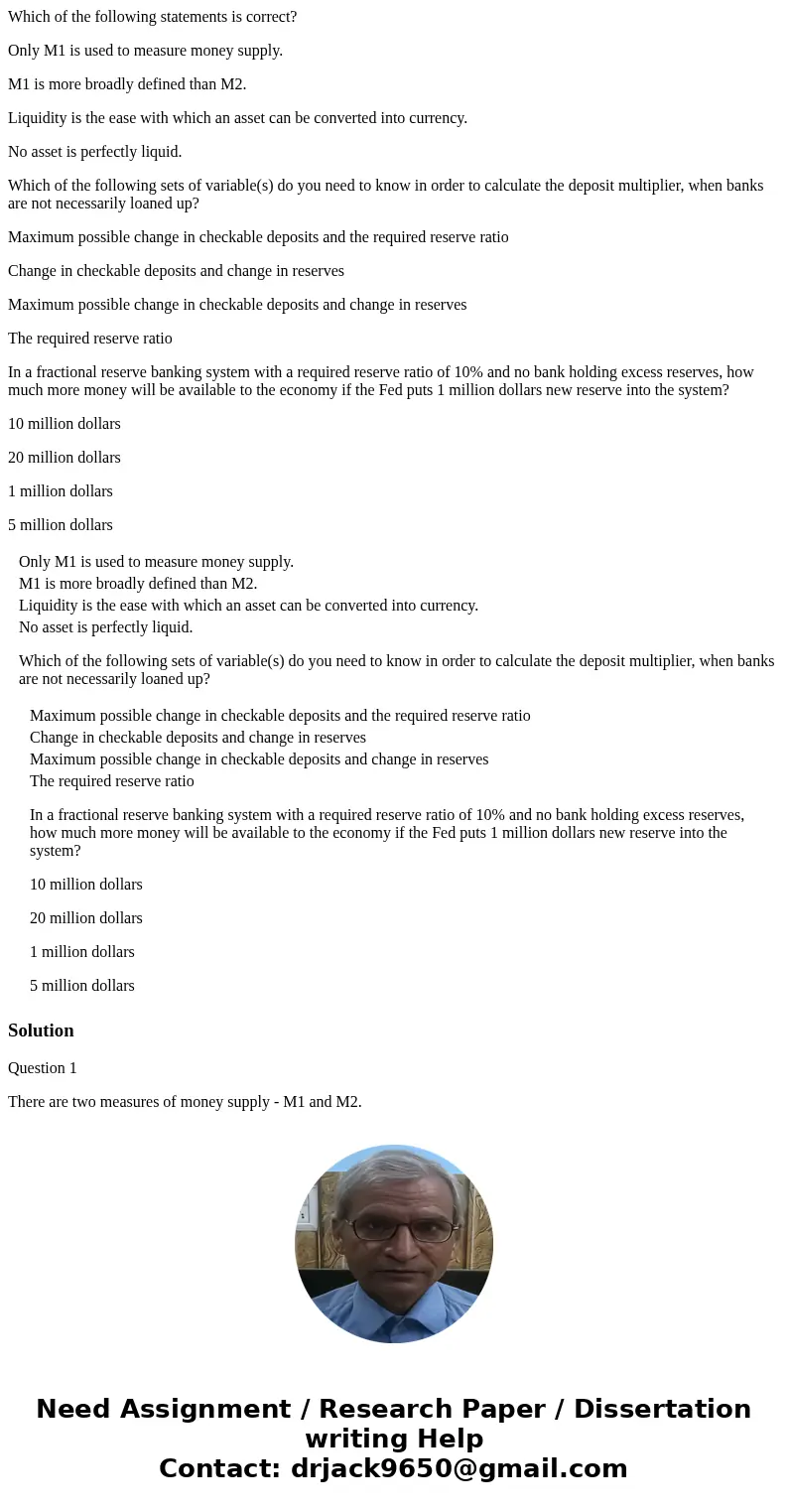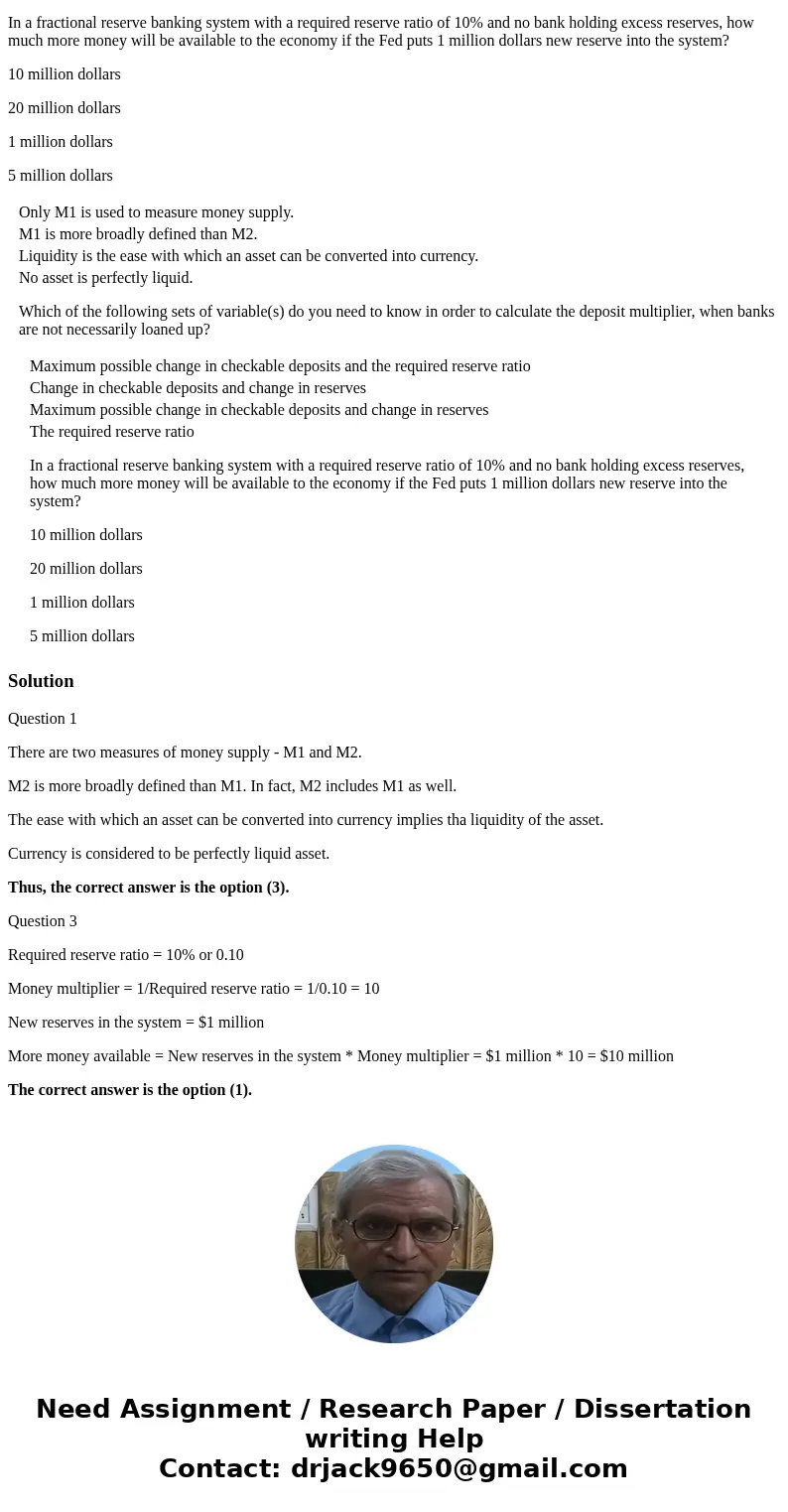Which of the following statements is correct Only M1 is used
Which of the following statements is correct?
Only M1 is used to measure money supply.
M1 is more broadly defined than M2.
Liquidity is the ease with which an asset can be converted into currency.
No asset is perfectly liquid.
Which of the following sets of variable(s) do you need to know in order to calculate the deposit multiplier, when banks are not necessarily loaned up?
Maximum possible change in checkable deposits and the required reserve ratio
Change in checkable deposits and change in reserves
Maximum possible change in checkable deposits and change in reserves
The required reserve ratio
In a fractional reserve banking system with a required reserve ratio of 10% and no bank holding excess reserves, how much more money will be available to the economy if the Fed puts 1 million dollars new reserve into the system?
10 million dollars
20 million dollars
1 million dollars
5 million dollars
| Only M1 is used to measure money supply. | ||||||||||||||
| M1 is more broadly defined than M2. | ||||||||||||||
| Liquidity is the ease with which an asset can be converted into currency. | ||||||||||||||
| No asset is perfectly liquid. Which of the following sets of variable(s) do you need to know in order to calculate the deposit multiplier, when banks are not necessarily loaned up?
|
Solution
Question 1
There are two measures of money supply - M1 and M2.
M2 is more broadly defined than M1. In fact, M2 includes M1 as well.
The ease with which an asset can be converted into currency implies tha liquidity of the asset.
Currency is considered to be perfectly liquid asset.
Thus, the correct answer is the option (3).
Question 3
Required reserve ratio = 10% or 0.10
Money multiplier = 1/Required reserve ratio = 1/0.10 = 10
New reserves in the system = $1 million
More money available = New reserves in the system * Money multiplier = $1 million * 10 = $10 million
The correct answer is the option (1).


 Homework Sourse
Homework Sourse